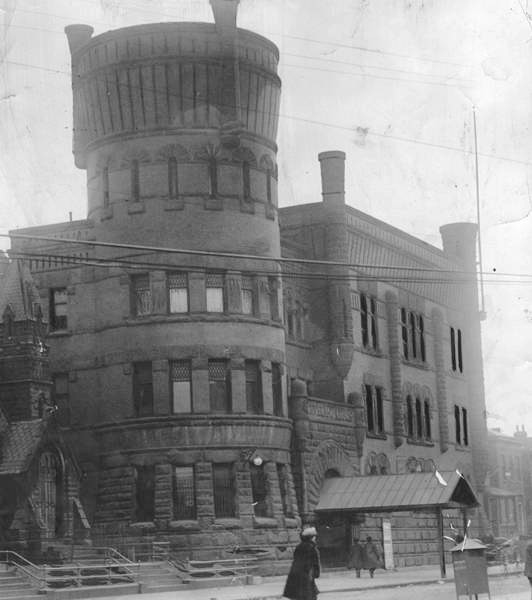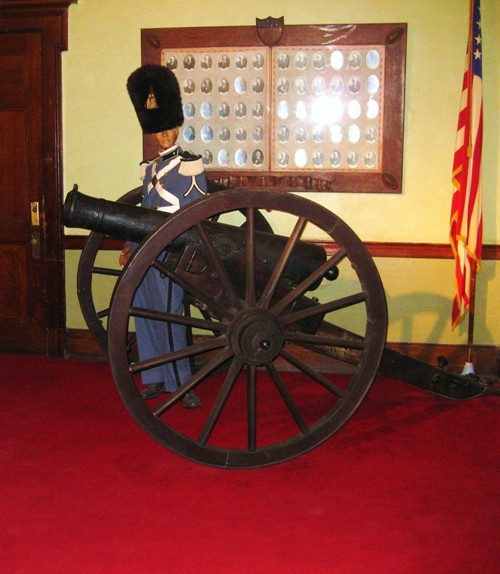Grays Armory

On May 30, 1893, patriotic melodies of the Grand Army Band of Canton could be heard coming from the corner of Bolivar Street and Prospect Avenue as an exciting celebration was taking place - the laying of the new Grays Armory cornerstone. Grays Armory was to be the new location of weaponry and drilling procedures for the Cleveland Grays, a local volunteer militia group who had served Cleveland and country since 1837 and would continue to do so until WWI. The Grays did find their home here, but Grays Armory was also host to many other civic and social events including military balls, a performance by the Metropolitan Opera Company in 1902, the first performance of the Cleveland Orchestra in 1917, a speech by William Howard Taft in 1916, and multiple appearances by William McKinley.
The history of the Cleveland Grays makes their headquarters all the more interesting. Sixty-five men formed themselves into a City Guard Unit on February 22, 1837, and the color of their uniforms later inspired their name. The Cleveland Grays' primary purpose was to protect the city from disturbances and riots, but they were involved in many other Cleveland events as well. According to an article in the Cleveland Plain Dealer on May 26, 1893, "Probably no public event of importance has occurred since [the time they were organized] but the Grays were participants. . . . every monument and public improvement in Cleveland they have assisted in dedicating . . ."
The public also depended on the Grays for peace and order. For example, in 1852 the gun squad put an end to a two day riot at Cleveland's Medical College. These nine Grays were then organized into the Cleveland Light Artillery. The local artillery militia and the rest of the Grays would soon be summoning their bravery in conflicts outside of Cleveland.
At the beginning of the Civil War, the local militia stood fast to their motto Semper Paratus, meaning "always prepared." On April 14, 1861 the Cleveland Grays left Cleveland as the first company to respond to the call for Union soldiers. They served as Company E, 1st Ohio Volunteer Infantry, in the 84th OVI, and as Company A, 150th OVI in 1863. While serving in these regiments, the Cleveland Grays took part in the First Battle of Bull Run on July 21, 1861, the defense of Washington D.C. during the Confederate's Valley Campaigns of 1864, and other skirmishes. Following the Civil War, the Grays went on to serve their country in the Spanish-American War, the Mexican Expedition in 1916, and World War I. Although amendments to the Militia Act of 1903 prevented the Grays from serving in other conflicts as a local militia group, they continued their organization up until the 1990s as a "Businessmen's Camp."
Part of Grays Armory now serves as a museum. Probably the most salient item on display is the first cannon captured by the Union in the Civil War. The cannon's first Cleveland home was in Public Square, where it would fire after each Union victory. A few of the features the armory was designed with are a 140' shooting range in the basement, an equipment room with lockers and a place for arms, a drill room, a billiard room, and a banquet hall. The large sandstone building is filled with relics of the Cleveland Grays' deeds and services.
Images





